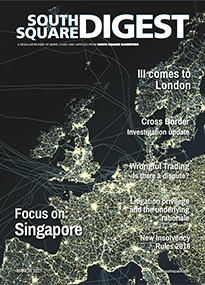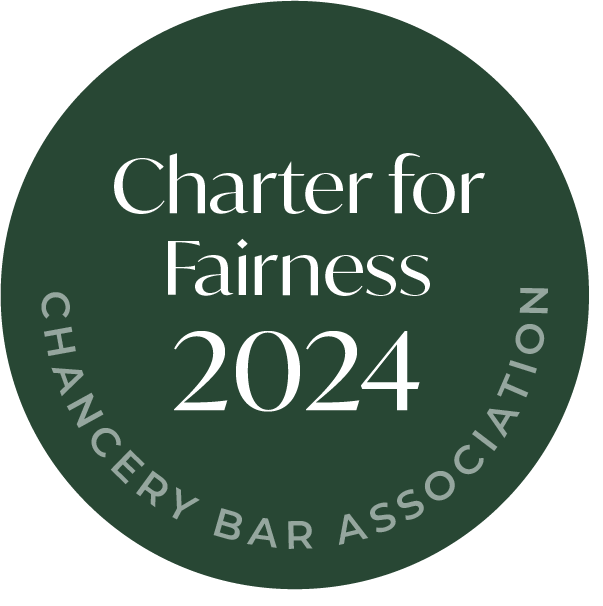

Glen Davis QC reflects on the lessons to be drawn from two recent wrongful trading claims in which liquidators came back empty-handed
The familiar provisions of section 214 of the Insolvency Act dealing with ‘wrongful trading’ are in some ways an example of what would nowadays be called ‘nudge’ legislation. They impose no explicit duty on the director of an insolvent company to avoid causing loss to creditors, but rather encourage appropriate conduct by the threat that an order to contribute to the estate will be made if the director does not take every step the court considers he ought to have taken after the point of no return to minimise the potential loss to the company’s creditors. As the Supreme Court has recently observed, these are part of the set of statutory provisions which operate ‘to restore the insolvent estate for the benefit of creditors as a whole’ 1 . Since 1 October 2015, and in respect of trading after that date, they don’t only apply in liquidation; the court also has power to direct contribution in an appropriate case where a company has entered administration 2. There is no doubt that these provisions do concentrate the minds of (at least, most) directors of companies in distress. As a result, advice about potential ‘wrongful trading’ liability and responsibilities inevitably comes high up the list of subjects whenever we are advising directors of companies which may be (or are about to become) insolvent. In most cases, directors will be able to satisfy the test of taking every step which objectively ought to have been taken by seeking and following the advice of insolvency practitioners and/or expert insolvency lawyers, and so rely on the defence in section 214(3) (in administration, s246ZB(3)) 3 . The cases which cause difficulty are likely to be those where the directors do not appreciate their position until too late, or where, despite taking advice, they are intent on carrying on regardless. The broad principles guiding an exercise of the court’s wide discretion under section 214 are reasonably clear from a line of cases since 1986 which have considered the scope of the section (and the corresponding jurisdiction in the context of directors’ disqualification).
As long ago as the Produce Marketing Consortium litigation in 1989, Knox J clarified that the objective component of liability under section 214 meant that a director could not rely on the general defence of acting honestly and reasonably under section 727 of the Companies Act 19854 . Following a subsequent hearing, he said that the court would assume that a director possessed a certain minimum level of knowledge, being the knowledge he would acquire if the company complied with its statutory obligations, and emphasised that the function of the court under section 214 is compensatory rather than penal 5 . This was the first case to come to judgment under section 214, which Knox J recognised had been introduced (originally as section 15 of the Companies Act 1985) to widen the court’s powers beyond the fraudulent trading provisions which had existed since the Companies Act 19296 . Knox J considered that, prima facie, the appropriate amount for a director to contribute would be: ‘the amount by which the company’s assets can be discerned to have been depleted by the director’s conduct which caused the discretion under 214(1) to arise’ 7 This in fact accepted submissions of Mary Arden as counsel for the applicant liquidator. As she put it in her submissions, the jurisdiction was an enhanced version of the right which any company would have to sue its directors for breach of duty, enhanced in the sense that, under section 214, the standard of knowledge, skill and experience is made objective 8 . This introduced an element of causation into the exercise which does not appear on the face of the section, but serves as a rational starting point for quantification. However, the court has a discretion to adjust the amount of contribution so as to avoid unjust results. These could include situations where full repayment would produce a windfall to third parties, or would involve money going round in a circle or passing through the hands of someone equally culpable9 , but in the final analysis the discretion is unfettered. As Knox J also observed: ‘But Parliament has indeed chosen very wide words of discretion and it would be undesirable to seek to spell out limits on that discretion…’ Given the frequency with which questions about potential wrongful trading liability arise in the course of day-to-day practice, it is in some ways surprising that there have been relatively few cases over the 30-year history of section 214 which have proceeded as far as judgment. Many prospective cases either fail at an early stage of analysis, or settle once the contours of the claim have become clear, or are not pursued because the directors are insufficiently worth powder and shot.
Against that background, it is interesting to consider two recent cases – the only two cases of which I am aware in which the High Court gave judgments on wrongful trading claims in 2016 – to see what practical lessons can be drawn. They are both cases in which, as the judgments stand10 , the wrongful trading claims failed. The first decision is Snowden J’s judgment in Grant v Ralls 11 , which was handed down in February 2016. This case involved a building company which had made trading losses since the year to 31 October 2009. By (and for some time before) 31 July 2010, it was insolvent on both a balance sheet and a cash flow basis. At a meeting on 2 August and in a letter of 6 August 2010, the directors received expert advice from an insolvency practitioner (who subsequently became one of the joint administrators, and then one of the joint liquidators). They carried on trading while pursuing a prospective share acquisition and injection of capital by an apparently-wealthy third party, which in the event did not materialise. The company entered administration on 13 October 2010, and subsequently went into liquidation. The statement of affairs in the administration showed a net deficiency of £884,000. The joint liquidators contended that the directors ought to have realised that there was no reasonable prospect of avoiding insolvent liquidation by the end of July 2010, or at the latest the end of August 2010. However, the directors had sought advice from an appropriate insolvency practitioner. His advice, early in August, did not suggest that it was unreasonable to continue to trade while the possible investment was pursued (and in the meantime, the company would have been able to complete various contracts). In Snowden J’s view, that was fatal to the liquidators’ case that the directors ought to have concluded as at 31 July that there was no reasonable prospect of avoiding insolvent liquidation12 . However, Snowden J considered that, by the end of August, a realistic assessment should have led the directors to conclude that the investor could not be relied on, so that there was no reasonable prospect of avoiding insolvent liquidation from that time. The onus was then on the liquidators to establish that continued trading by the company after 31 August 2010 and up to the time it entered administration on 13 October 2010 had caused a loss to the company. However, the liquidators had not limited their pleaded claim to loss caused to the company caused by the wrongful trading13 . In their points of claim the liquidators’ main item of claim was the alleged increase in the net deficiency of the company over the alleged period of wrongful trading. But they sought to quantify that, not by balance sheets drawn as at 31 August and 13 October, but rather by two schedules with computations of creditor movements and cash receipts, apparently on the basis that, if the company had entered administration on 31 August 2010, the money would have been received but would not have been spent. On that basis, their claim was put at £1,045,039, which was subsequently reduced at trial to £895,212. In the alternative, the liquidators claimed that the directors should contribute £600,522, being the aggregate of trade debts incurred by the company after 31 August 2010. They also sought to pursue an ancillary claim to recover all the administration and liquidation costs and expenses, a total sum of £287,071. The directors advanced a defence under section 214(3), arguing that they had done everything that they ought to have done. Snowden J also said that it was plain that this provision is intended to be a ‘high hurdle’ for directors to surmount, and that it was therefore right to construe it strictly. A director who wishes to take advantage of the defence is required to demonstrate not only that continued trading was intended to reduce the net deficiency of the company, but also that it was ‘designed appropriately so as to minimise the risk of loss to individual creditors.’ 14 He thought that the directors were not entitled to an outright defence under section 214(3) on the facts of this case, because the manner in which they chose to continue trading meant that the bank and some existing unsecured creditors were paid at the expense of others. That required him to go on and consider whether the liquidators’ case on quantum was made out. Snowden J said, following the decisions of Vinelott J in Re Purpoint Limited15 and Park J in Continental Assurance16 , that the correct approach to determining whether the directors should be required to contribute is (as the directors had contended): ‘…to ascertain whether the company suffered loss which was caused by the continuation of trading after 31 August 2010 until the company went into administration on 13 October 2010, and that as a starting point this should be approached by asking whether there was an increase or reduction in the net deficiency of the company as regards unsecured creditors between the two dates.’ 17 Snowden J also considered that:‘… there has to be some causal connection between the amount of any contribution and the continuation of trading. Losses that would have been incurred in any event as a consequence of a company going into a formal insolvency process should not be laid at the door of directors under s. 214.’18 Approached on that basis, the liquidators’ numbers had been prepared on the wrong basis and their claims were hopelessly optimistic. The figures before the court range between a reduction in the net deficiency of about £132,833 over the period to an increase in the net deficiency of £45,000. Snowden J was not convinced that the continued trading had caused any, or any material, increase; if anything, the evidence suggested that there had been a modest improvement 19. He considered it entirely plausible that the continued activity did not cause loss to the company overall or worsen the position of creditors overall 20.The real vice identified in Grant v Ralls seems to have been that continuing to trade facilitated repayment of the company’s bank and some existing creditors while leaving new creditors unpaid. Whatever else might have been said about this conduct, Snowden J considered that it did not justify requiring the directors to make any contribution under section 21421.So, after an expensive trial which had lasted some 15 days, the liquidators’ primary claim in Grant v Ralls failed. In retrospect, it failed because they had not analysed their evidence with sufficient rigour at the outset, and they had not put their financial case on the correct analytical basis. There was a sequel, because the liquidators also claimed to be entitled to recover, under section 214,administration and liquidation costs and expenses. As originally framed, this was asserted in respect of all the costs of the insolvency. On any view that was too wide in the light of the view Snowden J had taken of the scope of section 214(1), and at the start of the trial the liquidators restricted their claim in this regard to the extent to which the costs and expenses of the administration had been unnecessarily increased by any wrongful trading. The liquidators sought assessment of this sum by the court, but had not provided any detailed evidence or disclosure at the time of the trial, and Snowden J held this aspect over until after his decision on the main issues. In the event, there were two more days of argument, and Snowden J gave a further judgment, Grant v Ralls (No 2) 22. By the time of the second hearing,the liquidators had adduced evidence that their additional costs and expenses of dealing with the wrongful trading claim were some £256,160. The bulk of these costs did not relate to the initial investigation but to the involvement of the liquidators and their firms in the conduct of the claim until, and during, the trial. Essentially,their argument was that there was power to order these costs to be paid by the directors under section 214 to avoid them increasing the net deficiency of the company to the detriment of the unsecured creditors 23.There is a well-established principle that a litigant in conventional litigation cannot recover their expenses other than by way of a costs order 24. Snowden J saw no reason why a section 214 claim should be treated any differently from a claim in tort or contract. As he put it:‘A claim under section 214 is simply one of the statutory tools available to a liquidator or administrator to seek to restore the value of the insolvent estate for distribution to creditors, and wrongful trading claims are often made together with or as an alternative to, a claim brought in the name of the company itself for damages for breach of a director’s duty of care or breach of his fiduciary duty in connection with transactions entered into prior to insolvency. Such aims all fall to be investigated and to be instituted by the office-holders in fulfilment of their statutory duties, and it would be illogical if different principles as to the recovery of costs and expenses applied to such claims, especially if brought together as partof the same case.’ As an aside, the liquidators had sought to rely on David Richards J’s decision in 4 Eng Ltd v Harper 25. That was a case in which investigatory costs in a fraud case were allowed,but in rather special circumstances. Snowden J readily distinguished it on the basis that, in 4 Eng, the work for which damages were awarded had been completed three or four years before the claimant issued proceedings, so there was no question of it having been undertaken in the context of pending litigation, whereas in the instant case,the possibility of a claim under section 214 had been mooted at the outset of the liquidation and was the very reason that one of the liquidators had been brought in as joint liquidator. Snowden J also accepted that the time costs of the liquidators would not have been recoverable as costs in the litigation (following the extensive analysis of this point by Warren J in SISU Capital Fund 26). This was not one of those exceptional cases where a corporate party may be able to recover direct costs of specialist employees if they are the most suitable or convenient experts to employ, the so-called Nossen principle 27. In the case before Snowden J, both sides had had their own independent expert who gave evidence at the trial. In Continental Assurance, Park J said that it was not enough for a liquidator claimant merely to say that, if the company had not still been trading, a particular loss would not have been suffered 28, and Snowden J agreed that section 214 requires something more than just a ‘but for’ test of causation:‘A director’s conduct is not wrongful for the purposes of section 214 simply because there is a relevant date at which he actually concluded or ought to have concluded that insolvent liquidation was inevitable. Nor is it wrongful per se for a director not to put the company into administration or liquidation once that relevant date has been reached … Accordingly, I cannot see that merely establishing that there was a relevant date beyond which the directors did not immediately place the company into administration provides any basis for characterising their conduct as “wrongful” for the purpose of section 214, or that of itself it provides a basis for ordering them to pay for the fees and costs subsequently incurred by the joint liquidators in investigating or pursuing litigation to establish when the relevant date occurred in this case.’ 29
For good measure, Snowden J rejected the liquidators’ very late application to amend their pleadings, give late disclosure and adduce further evidence to enable the issue of the quantum of the additional costs and expenses to be determined at another hearing. And for completeness, there had also been an application for an order to be made under the Company Directors Disqualification Act 1986. As Snowden J had not made an order for contribution under section 214, the jurisdiction to make such an order did not arise. But Snowden J said that, if it had arisen, he would in any event have adjourned his decision to give the Secretary of State an opportunity to make any submissions as might be thought appropriate (with copies to the parties) 30. The second recent case, which also failed, is Brooks and anor (Liquidators of Robin Hood Centre plc) v Armstrong andanor 31, decision of David Foxton QC sitting as a Deputy Judge of the Chancery Division. The relevant Company, as its name suggests, had operated a ‘Robin Hood themed’ tourist attraction in Nottingham until it went into creditors voluntary liquidation in February 2009. The liquidators originally advanced a claim for compensation of some £596,704, and by the time they served their Points of Claim that had increased to £701,646, which was their best estimate of the entire deficiency in the liquidation. After a seven-day trial before Mr Registrar Jones in July 2015, the Registrar ordered the respondent directors to contribute £35,000 to the estate. By the start of the trial, the liquidators’ costs were apparently of the order of £1 million At a subsequent hearing, the Registrar decided that there should be no order as to costs. Both sides appealed aspects of those decisions,and it was those appeals which came before the Deputy Judge, who allowed the directors’ appeal because, he said, the liquidators had not established that the wrongful trading had caused any increase in the Company’s net deficiency. From 1999, the Company had operated a form of VAT-avoidance scheme. Entry tickets were sold for a price which included the value of discount vouchers that could be redeemed at a future date for purchases inside the Robin Hood tourist attraction. VAT was applied to that part of the ticket price attributable to the entry tickets, with VAT only attributed to the voucher value should the voucher be used. However, there was a change in the relevant VAT regulations in 2003. The Company became aware of the change when HMRC visited in February 2006, and in a letter in September 2006, HMRC took the view that VAT should have been charged on the full ticket price for the previous 3 years. This left the Company with a £150,000 liability for historic VAT, and it was this debt which was ultimately the background to the Company’s collapse. Before the Registrar, the question of when the directors ought to have concluded that they had no reasonable prospect of avoiding insolvent liquidation (which he styled the ‘Knowledge Condition’) turned really on how long the Company was entitled to investigate its options, in circumstances in which “subject to the VAT liability the Company was commercially solvent and making a consistent profit”. The Liquidators’ pleaded case alleged that the Knowledge Condition was met on five dates: 31 January 2005, 31 January 2006, 9 October 2006, 31 January 2007 and 3 May 2007. The Registrar found that the condition was satisfied for 31 January 2007, and independently for 3 May 2007, but not for any earlier date. The second issue raised in the proceedings was the directors’ defence under section 214(3): ie whether the Court was satisfied in relation to the relevant Director that he took every step with a view to minimising the potential loss to the Company’s creditors as he ought to have taken. The Registrar referred to this as “the Minimising Loss Defence”. The Registrar had held that this succeeded up to 3 May 2007, but not thereafter. On appeal, the liquidators sought to pull the Knowledge Condition date back to 9 October 2006, and contended that the Minimising Loss Defence also ought to have failed at an earlier date. The principal argument for the liquidators was that the directors could not reasonably have proceeded on the basis that the Company was making and would continue to make an operating profit after that date, without taking account of the effect of HMRC’s position that the VAT scheme was ineffective as regards future trading as well as regards its historic effect.
The Deputy Judge regarded this as a point of substance, but the difficulty he found with it was that it had not been taken before the Registrar or put to the directors in cross-examination. The issue of whether any measures taken were or might have been sufficient to preserve the operating profit of £40,000 otherwise disclosed by the Registrar’s analysis of the accounts had not been considered at the hearing. It was not possible under those circumstances (and would not have been fair to the Directors) to seek to resolve it on the appeal. By that time, it was too late. The substantive issue of interest on the appeal concerns the discussion of how any compensation payable under section 214 is to be calculated. The Deputy Judge noted that, as section 214 is a compensatory rather than punitive provision, it is necessary to consider what effect the wrongful trading had 32, and he referred both to Park J’s comments in Continental Assurance and to Snowden J’s comments in Grant v Ralls. The Deputy Judge then went on to consider the cases which deal with what happens when the maximum amount cannot be determined. In Re Purpoint Limited 33, Vinelott J was concerned with an application under section 212 of the Insolvency Act, in which it was impossible to ascertain the precise extent of the company’s liabilities at the relevant times because of the misfeasant director’s ‘total failure to ensure that proper records were kept and that proper cash flow calculations and net worth calculations were made’ 34. Against that background, he thought the only solution was to quantify the loss caused by the continuation of trading by aggregating the debts owed to creditors and the crown debts incurred after the relevant date. In Re Idessa (UK) Ltd35, an unreported decision of Leslie Anderson QC sitting as a Deputy, the Deputy Judge held that, once the liquidators had proved that a relevant payment had been made, the evidential burden was on the particular director to offer a satisfactory explanation. The directors had submitted that they could not offer that explanation because of the absence of relevant books and records. She considered that the directors were ‘authors of their own misfortune’ who were ‘using the absence of books and records as a smokescreen’ 36. Thirdly, in Re Kudos Business Solutions Ltd 37, Sarah Asplin QC sitting as a Deputy heard a wrongful trading case brought under section 214 in which no accounts had been compiled for one of the financial years. She followed Re Purpoint and ordered the director to make a contribution
quantified in terms of the aggregate of the company’s debts after the relevant date 38 Finally, David Foxton QC referred to Grant v Ralls, in which Snowden J had rejected a submission based on Re Purpoint and Re Kudos. The liquidators in Brooks v Armstrong had also sought to rely on Re Purpoint and Re Kudos, and contended that the court should quantify the maximum loss as all unpaid debts incurred after the date on which the company should have stopped trading. The Deputy Judge considered this ground of appeal to be misconceived,and said it failed at a number of levels. The liquidators had not contended at the hearing that it was impossible to perform an ‘increase in net deficiency’calculation. The Registrar himself had been able to perform, and had performed, such a calculation, by using accounts available as at 1 January 2007 and comparing these with the position at the date of liquidation. There was no finding by the Registrar that there had been a failure to keep records contemporaneously; such records had been kept, although there was a dispute about who was responsible for not collecting them which the Registrar had felt unable to resolve. Moreover, the liquidators had not searched computer hard drives until very late in the day, and had been refused permission to adduce material emanating from that search because it had only been produced at the very last minute, so that ‘it is simply not possible to say what, if any, documents relevant to the enquiry before the Registrar were not in fact provided or available to the liquidators’ 39. And finally, it would not have been right for the court on appeal to substitute its view of the honesty of a director for that of the Registrar before whom he had been cross-examined. The Deputy Judge was also highly critical of the manner in which the liquidators’ case on causation and quantum had been advanced. They seem to have assumed that compensation issues would be hived off for an enquiry into damages at a later stage, although this had never been sought or ordered 40. The liquidators’ case on quantum was not set out for the directors to see clearly the case against them, despite repeated complaints in correspondence on their behalf. It was only under cover of a ‘without prejudice save as to costs’ letter in June 2015, just under three weeks before their skeleton was served, that the liquidators served what were described as draft schedules including ‘five calculations of loss that will serve as useful tools to the parties and the Court at trial’ 41. In their skeleton, the liquidators took the stance that ‘actual figures will only be arrived at once the relevant dates are fixed’ 42. This simply wasn’t good enough. As the Deputy Judge recorded 43 :‘…the approach taken by the Liquidators to setting out and particularising their case as to the amount of compensation which the Directors should be ordered to pay was fundamentally deficient throughout. The importance of one party setting out the parameters of the case it is advancing so that the other party may prepare for the case it has to meet, both in its evidence and its argument, is obvious…’. The Registrar himself dismissed the Liquidators’ calculations as ‘wrong and wholly unrealistic’ 44. Faced with these deficiencies in the Liquidators’ case, the Registrar did not rely on their schedules, but arrived at his own conclusions based on the materials before him. The Deputy Judge had some sympathy with the Registrar’s quandrary: ‘The Liquidators had neither properly set out a case on these issues, nor grappled with many of the issues which the claim raised and which the Registrar himself identified’ 45. However, the problem was that the Registrar reached his conclusions following an analysis which had not been advanced by either party, and which had not been the subject of submissions at the hearing. This was procedurally unfair, and the Deputy Judge was driven to the conclusion that, unless the analysis adopted by the Registrar was one to which the directors could have raised no legitimate objection had it been raised at the hearing (which was not the case), the directors were entitled to succeed on that limb of their appeal. The Deputy Judge also considered that the Registrar’s analysis did not properly identify what, on the findings he had made, was the ‘increase in net deficiency’, and if the Registrar was concluding that section 214 gave relief in respect of individual creditors whose position had been worsened by wrongful trading even though the net deficiency had not increased, that was wrong in law 46.As he put it: ‘the Registrar should not have ordered any payment by the Directors to the Liquidators under s. 214 (a) because the Liquidators failed to advance and establish a properly formulated case that there had been any increase in net deficiency during the period of wrongful trading, and (b) on the approach and facts found by the Registrar, there was no such increase.’47 So the Registrar’s order that the directors were jointly and severally liable to pay compensation of £35,000 was set aside. It is always easy to be wise after the event, and we do not know the reasons for tactical decisions that were taken in preparation for, and at, the trial, but it is difficult to escape the conclusion that Brooks v Armstrong is a particularly salutary example of what can go wrong when those advising liquidators do not analyse with sufficient rigour what they will need to prove at trial, and in particular do not identify the points which need to be put in crossexamination. So what general lessons can we draw from these cases? First, as Snowden J observed48 referring to Eurosail 49, the mere fact that a company is insolvent (on a balance sheet or cash-flow basis) and carries on trading does not mean that a director – even one with knowledge of that fact – will be liable for wrongful trading if the company fails to survive: ‘Many companies show a balancesheet deficit from time to time, but nevertheless have every real prospect of trading out of that position or otherwise recovering from the deficiency and thereby avoiding an insolvent liquidation…’ Second, the relevant question is not whether the directors knew or ought to have known that the company was insolvent. The question is whether they knew or ought to have concluded that there was no reasonable prospect of avoiding insolvent liquidation 50. That question is to be answered objectively 51. Third, the court does not approach that question with the benefit of 20:20 hindsight. It accepts that directors are not clairvoyant: the fact that they fail to see what eventually comes to pass does not mean that they are guilty of wrongful trading 52. Fourth, the court will place weight (‘some weight’) on the evidence of whether directors took professional advice and if so, what that advice was 53. If an IP has not advised in terms against continuing to trade, it is unlikely that the court would conclude that it was unreasonable for the directors acting on advice to do so. Fifth, the starting point for any calculation of the amount of contribution will be the amount of loss caused to the company by the continued trading after the relevant date. Sixth, directors who wish to rely on the section 214(3) defence will need to show, not only that continued trading was intended to reduce the net deficiency of the company, but also that it was designed appropriately so as to minimize the risk of loss to individual creditors. And on a practical level, the pleadings for a wrongful trading claim must set out clearly the case which the directors will have to meet. As so often in litigation, there is just no substitute for cold-eyed and clear analysis at an early stage.
1/. Per Lord Sumption in Angove’s Pty Ltd v Bailey [2016] 1 WLR 3179, at [25] 2/. See section 246ZB of the Insolvency Act, introduced by section 117(1),(2) of the Small Business, Enterprise and Employment Act 2015
3/. see eg Re Continental Assurance Co of London plc [2007] 2 BCLC 287, in which, among other factors, the directors had taken appropriate advice when considering whether to carry on trading
4/. Re Produce Marketing Consortium (in Liquidation) Ltd (No 1) [1989] 1 WLR 745
5/. Re Produce Marketing Consortium (in Liquidation) Ltd (No 2) (1989) 5 BCC 569. The Court of Appeal confirmed that the court has no power to include a punitive element when ordering an amount of contribution in Morphitis v Bernasconi [2003] Ch 552, a section 213 case
6/. nowadays, of course, in section 213 of the Insolvency Act 1986
7/. see Re Produce Marketing Consortium (in Liquidation) Ltd (No 2) (1989) 5 BCC 569 at 597
8/. ibid
9/. cf Liquidator of West Mercia Safetywear Ltd v Dodd (1988) 4 BCC 30 per Dillon LJ at 33, a case under section 333 of the Companies Act 1948 to which the Judge’s attention was drawn.
10/. I understand one may be appealed.
11/. [2016] EWHC Ch 243 (Ch), [2016] BCC 293
12/. Grant v Ralls at [206]
13/. ibid at [253]
14/. ibid at [245]
15/. Re Purpoint Limited [1991] BCC 121
16/. Re Continental Assurance Co of London plc [2007] 2 BCLC 287 }
17/. Grant v Ralls at [241]
18/. ibid at [242]
19/. ibid at [268]
20/. ibid at [279]
21/. ibid at [279]
22/. In re Ralls Builders Ltd (in liquidation) (No 2) [2016] 1 WLR 5190
23/. Grant v Ralls (No 2) at [14]
24/. Cockburn v Edwards 18 Ch D 449 (tort); Al-Rawas v Pegasus Energy Ltd [2009] 1 All ER 346 (contract); Avrahami v Biran [2013] EWHC 1776 (Ch) in which the relevant authorities are considered by Newey J
25/. [2009] Ch 91
26/. SISU Capital Fund v Tucker [2006] BCC 463 at 577 et seq
27/. after In re Nossen’s Letter Patent [1969] 1 WLR 638
28/. Re Continental Assurance Co of London plc at [378]-[380]
29/. Grant v Ralls (No 2) at [31]-[32]
30/. ibid at [42], cf In re Idessa (UK) Ltd [2012] 1 BCLC 80
31/. Brooks and anor (Liquidators of Robin Hood Centre plc) v Armstrong and anor [2016] EWHC 2893 (Ch)
32/. Robin Hood Centre at [63]
33/. [1991] BCC 121
34/. Purpoint at p128
35/. [2011] EWHC 804 (Ch)
36/. Idessa at [34]
37/. [2012] 2 BCLC 65
38/. Kudos at [62]
39/. Brooks v Armstrong at [85]
40/. see Brooks v Armstrong at [96]
41/. see Brooks v Armstrong at [105]
42/. ibid at [106]
43/. ibid at [114]
44/. ibid at [108]
45/. ibid at [116]
46/. ibid at [120]
47/. ibid at [121]
48/. Grant v Ralls at [168]
49/. BNY Corporate Trustee Services Ltd v Eurosail-UK2007-3BL plc [2013] UKSC 28, [2013] 1 WLR 1408
50/. Grant v Ralls at [169]; cf Re C S Holidays Ltd; Sec of State for Trade and Industry v Gash [1997] 1 WLR 407 per Chadwick J at 414 and Re Hawkes Hill Publishing Co Ltd (in liq.) [2007] BCC 937 per Lewison J at [28]
51/. Grant v Ralls at [171]
52/. ibid at [171] to [173], citing Lewison J in Hawkes Hill at [41]
53/. ibid at [176] and [206], cf Re Continental Assurance Co of London plc per Park J at [107] and [269]

















